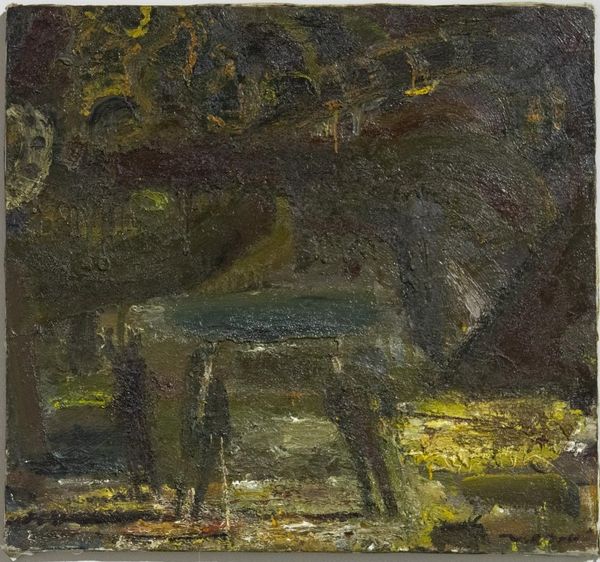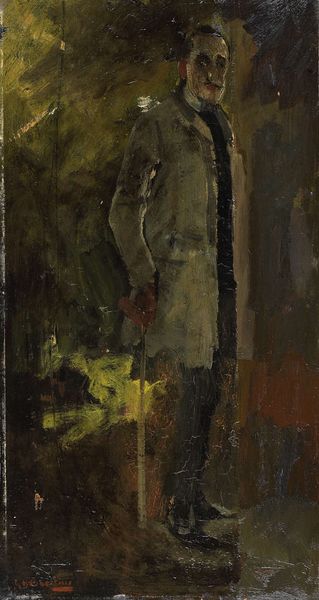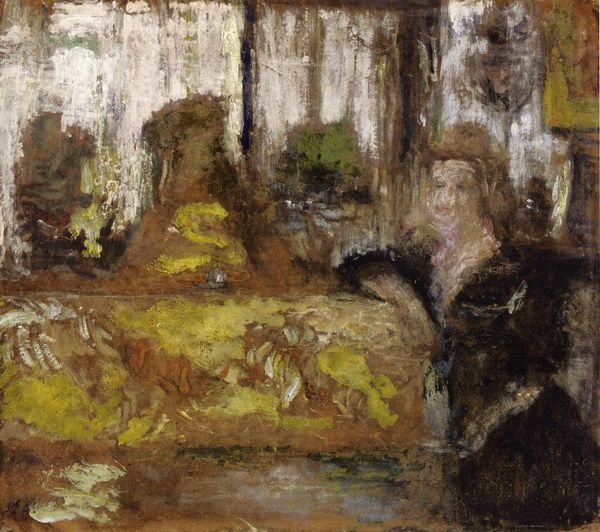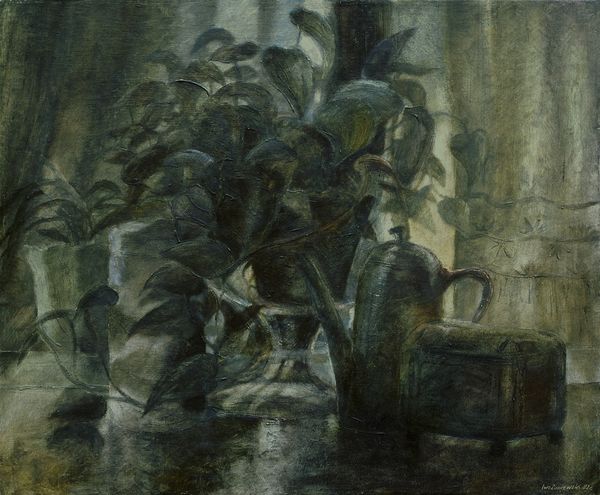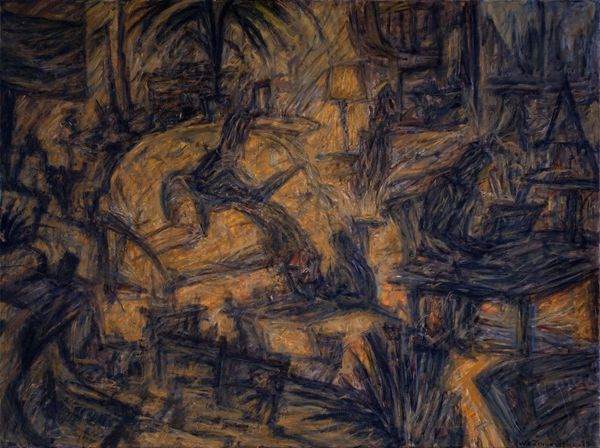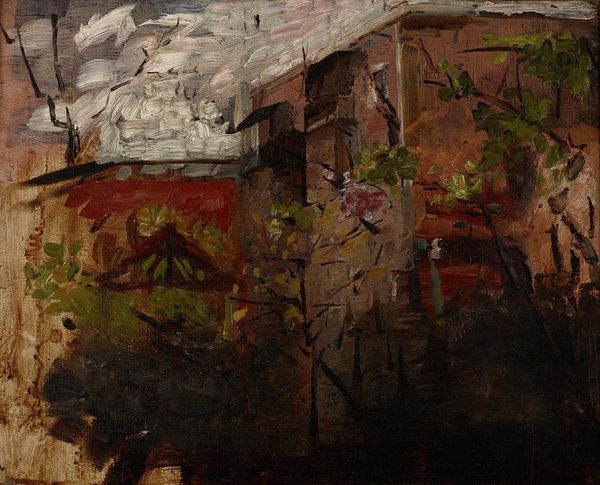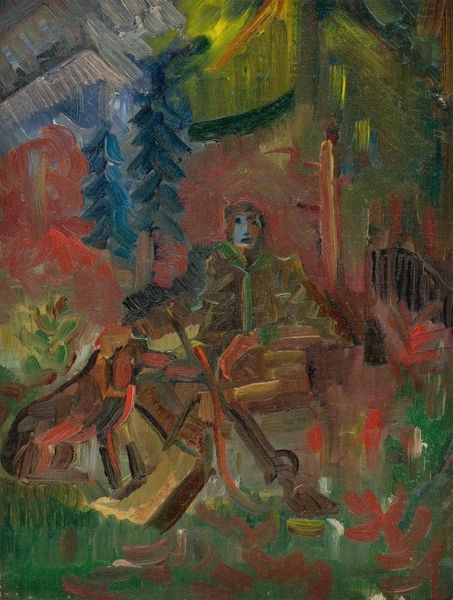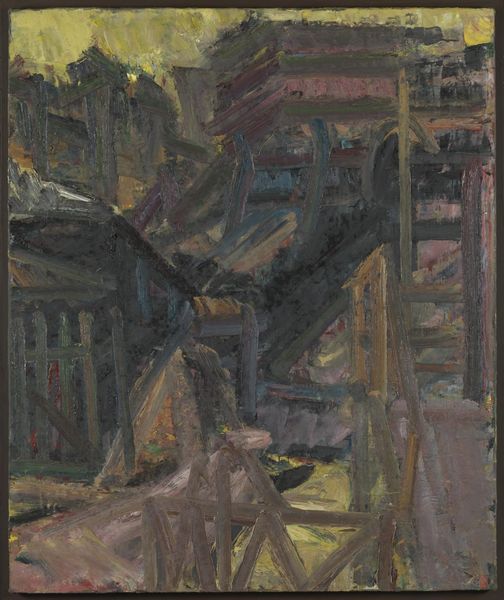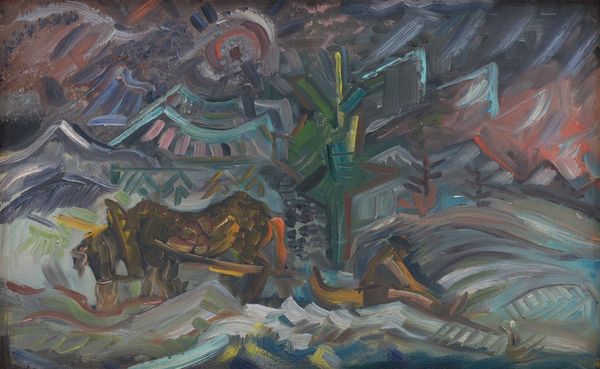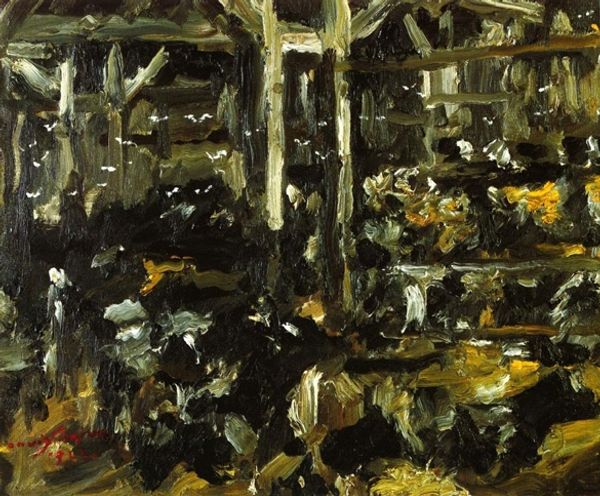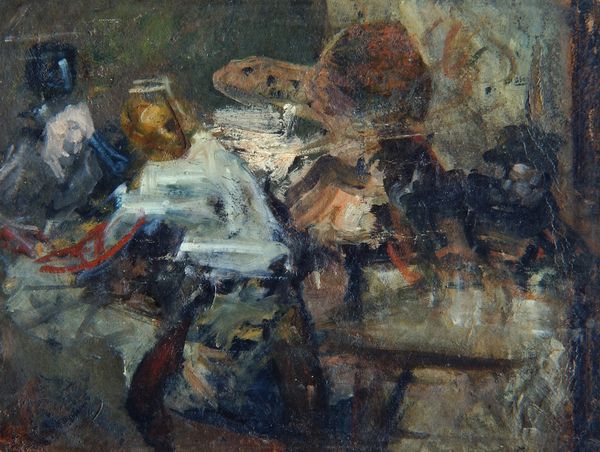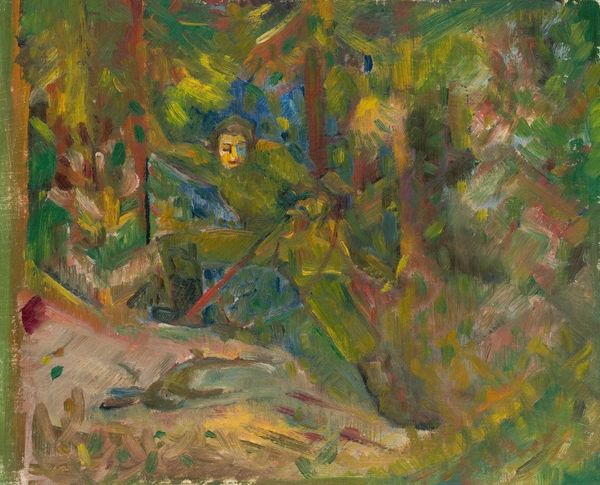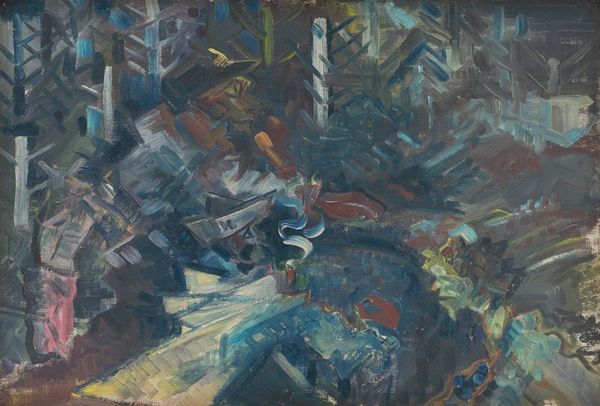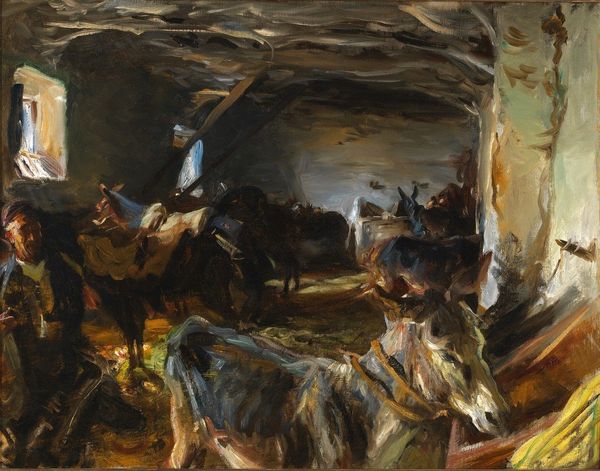
#
vorticism
Copyright: David Bomberg,Fair Use
Curator: Alright, so here we have David Bomberg's "Bomb Store," created in 1942 using oil paint. It’s currently held at Tate Britain in London. What strikes you first about it? Editor: A kind of ominous darkness, punctuated by angular shapes that fight for space on the canvas. It's visually heavy, like trying to make sense of something immense under pressure. There's a real tension to it, and it makes my head swirl a bit trying to see clearly. Curator: That’s interesting. I’m hearing that visceral response and I agree: this isn’t a straightforward depiction. Bomberg, at this point, had moved away from the more overtly geometric style he was exploring earlier in his career to one more rooted in expressionism. He wasn’t simply painting what he saw but trying to get at a deeper truth, a deeper emotion attached to what he saw. Editor: Yes, absolutely! The materiality and geometry suggest an almost industrial space, but then, like, the gloom takes over. Given the title and when it was painted, can we really separate this 'store' from a feeling of wartime claustrophobia? Or even consider its relationship to wartime labour and the gendered spaces in which these tasks happened? Curator: That’s spot on. This was commissioned by the War Artists’ Advisory Committee. Bomberg was initially assigned to depict underground bomb stores. There's this sense that the artist's own experience shapes what he creates. The bomb store wasn't just a storage facility. Editor: It becomes a kind of symbol, doesn't it? These spaces literally held instruments of death and destruction, the products of human industry that lead to ultimate global destabilization. Curator: Exactly. There’s also the artistic struggle going on here. He captures something profound, but also reflects a journey of artistic reinvention, of grappling with representation itself in a changed world. I admire that persistence so much. Editor: It definitely embodies the uncertainty of its time. The visual darkness echoes the conceptual darkness, I guess. So, in all, a potent encapsulation of a world teetering on the edge? Curator: Very well said. For me, I see a raw vulnerability beneath it all – a quality I cherish and often seek in art, the quiet voice humming in the dark that suggests we’re all in this tumultuous journey together.
Comments
No comments
Be the first to comment and join the conversation on the ultimate creative platform.
